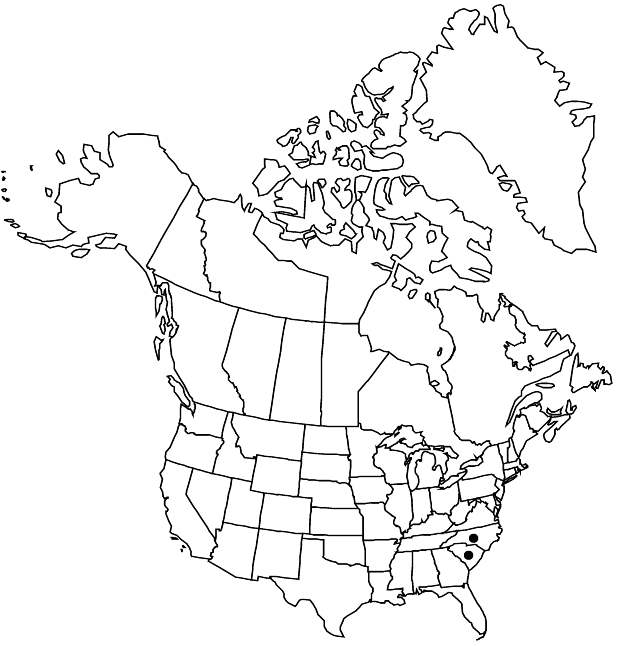Kalmia cuneata
Fl. Bor.-Amer. 1: 257. 1803 ,.
Shrubs spreading to erect, 0.5–1.5 m. Twigs terete, viscid, sparsely stipitate-glandular, puberulent, glabrescent. Leaves deciduous, alternate; petiole 2–4 mm, stipitate-glandular; blade oblanceolate to elliptic-lanceolate, 2–6 × 0.5–3 cm, margins plane or slightly revolute, apex obtuse to acute, apiculate, abaxial surface stipitate-glandular, adaxial surface glabrous or sparsely stipitate-glandular, midrib usually puberulent. Inflorescences axillary in distal end, racemes or fascicles, 3–10-flowered. Pedicels 1–3 mm. Flowers: sepals usually green, oblong, 3–4 mm, apex acute, surfaces glabrous to sparsely stipitate-glandular; petals connate their entire lengths, creamy white with red band adaxially, 12–14 × 13–20 mm, abaxial surface sparsely stipitate-glandular, adaxial puberulent near base; filaments 2.7–3.9 mm; style 7–11.5 mm. Capsules 5-locular, 2.5–3.5 × 4–6 mm, puberulent, stipitate-glandular. Seeds not winged, oblong, 0.5–0.8 mm. 2n = 24.
Phenology: Flowering late May-mid Jun.
Habitat: Wet, sandy peats, shrub bogs, pocosins, streamhead ecotones
Elevation: 20-200 m
Discussion
Kalmia cuneata is reported as a rare shrub and an endangered species (C. E. Wood Jr. 1961; R. M. Southall and J. W. Hardin 1974; Southall and P. W. Nelson 1978). R. Kral (1983) reported that it does not compete well with other bog shrubs, but “its main enemies up till now have been management schemes which involve mechanical clearing of the shrub layer, this usually accompanied by digging of drainage ditches, discing and ploughing.” It can be locally abundant in peat-based pocosins and other heath-dominated places, where recurring fire retards succession. The occurrence of this species in Hartsville, South Carolina, has been questioned; the collections were from a golf course and could be cultivated plants. NCU specimens say “bay near golf course” or “bay across lake,” implying relatively intact habitats.
Kalmia cuneata is in the Center for Plant Conservation’s National Collection of Endangered Plants.
Selected References
None.
Lower Taxa
"entire" is not a number.
